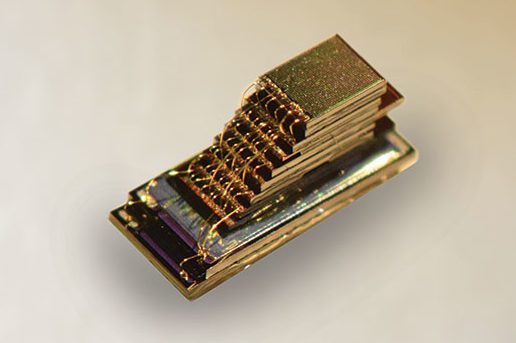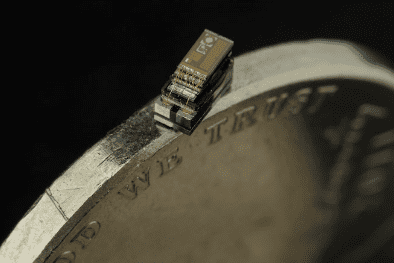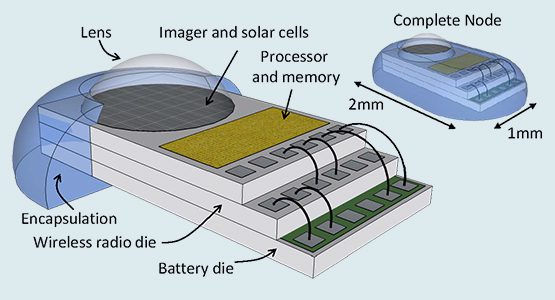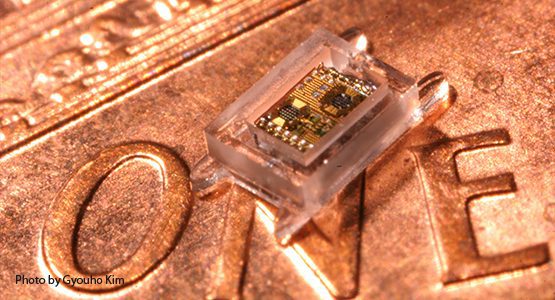Millimeter-sized computers log the temperature and pressure from deep within oil wells.
-

Michigan’s millimeter-scale computers featured at ISSCC2017, and in IEEE Spectrum
Professors Blaauw and Sylvester showcase capabilities of tiny computing
-

Alum startup wins $25,000 at Accelerate Michigan Competition
Movellus Circuits won $25,000 in the University Research Highlight and People’s Choice categories
-

Injectable computers
With a radio specifically designed to communicate through tissue, researchers from the Electrical and Computer Engineering are adding another level to a computer platform small enough to fit inside a medical grade syringe.
-

MBus is the missing interconnect for millimeter-scale systems
The M3 is a fully autonomous computing system that acts as a smart sensing system.
-

Michigan Micro Mote (M3) makes history as the world’s smallest computer
A brief history of what led to the technical feat known as the Michigan Micro Mote, a tiny speck of a computer that does it all.
-

Leaders in ultra low power cicuits and systems presenting at VLSI Circuits Symposium
All of the research being presented focuses on getting the absolute best performance from the tiniest circuits, sensors, and electronic devices.
-

Making smart dust a reality
This research is expected to have a fundamental and long term impact on a diverse set of applications ranging from energy conservation to health care.
-

Toward computers that fit on a pen tip: New technologies usher in the millimeter-scale computing era
U-M faculty have developed what is believed to be the first complete millimeter-scale computing system, with applications in radio communication and wireless sensing.
-
Paving the way for ubiquitous computing
Until now, ubiquitous computing has been hampered by the size of necessary batteries—but Ambiq Micro is changing that, with their energy-efficient micro-controllers.

 Michigan Engineering | University of Michigan
Michigan Engineering | University of Michigan